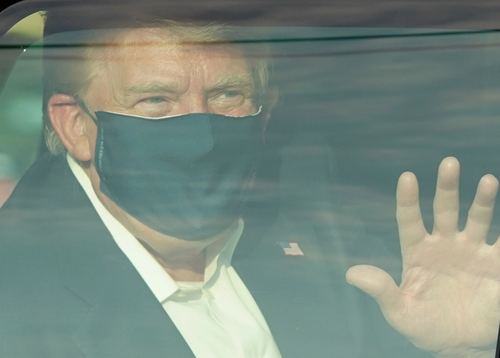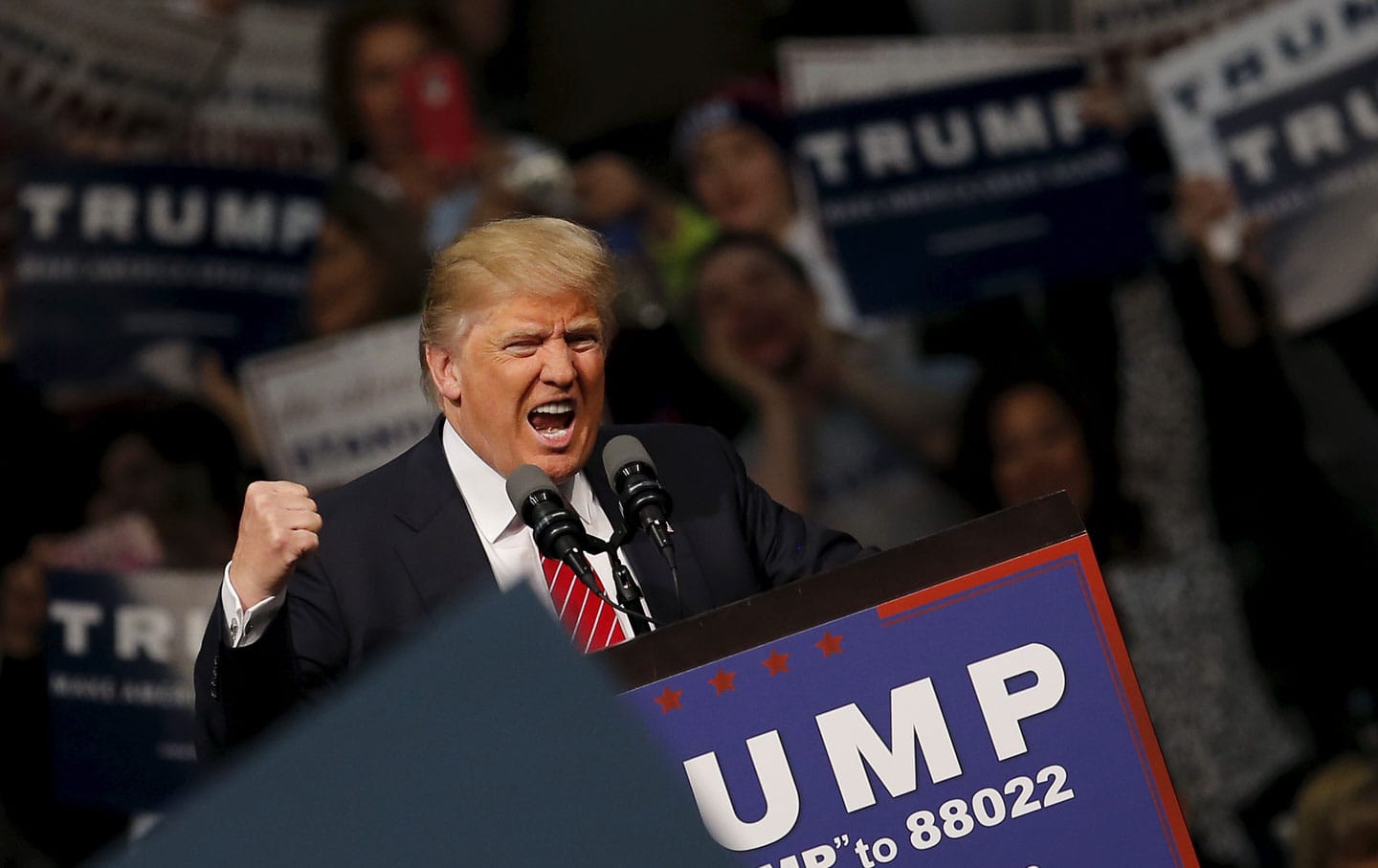October 7, 2016: Access Hollywood #
October 7, 2016, was a Friday. My wife and I sat in our family room, waiting to leave for the movie theatre to see La La Land. The television served as background noise until about ten minutes before we left. That’s when a Fox News Alert popped up.
Fox reported that NBC News had released an audiotape of a conversation between Billy Bush and Donald Trump. The tape was made on a bus as Trump and Bush prepared for an Access Hollywood segment.
Already severely behind in the polls, this well-timed audiotape seemed to doom the Trump campaign just days before his final debate, in St. Louis, against Hillary Clinton.
October 10, 2015: Scott Adams Says #
Cartoonist Scott Adams proposed a hypothesis in 2015: Donald Trump scripts his campaigns the way movie-makers script movies. It goes something like this:
Act One: The hero is thrown into an unusual situation. In the case of Trump, he becomes the unlikely frontrunner in the race for President.
Act Two: The hero struggles through a series of minor mishaps and serendipitous advances as he tries to get back to something like status quo ante.
Act Three: I’ll let Scott Adams take over from here:
At the end of the second act, nearly all movies follow the model where some unsolvable problem rears its head. The audience must feel that the protagonist can’t escape this problem. We know the movie is fiction, but we still feel the emotions of the actors. We love the feeling of the third act because it reminds us of our own unsolvable problems. The main difference is that the movie hero finds a way to solve the unsolvable. That solution is what makes it a movie. The audience needs to feel the third act tension followed by an unexpected solution in order to get the chemical rush of movie enjoyment.
The Access Hollywood bombshell was almost certainly that “unsolvable problem” certain to derail Trump’s hero’s journey to the White House.
March 16, 2020: Coronavirus #
If you were scripting Trump: The Movie, you’d have thrown in a global pandemic at the start of Act Two. Now, what would be the ultimate complicating factor to segue into Act Three?
Of course. The hero contracts that virus that served as his nemesis throughout Act Two.
Coronavirus directly attacked Trump’s greatest achievement, the one thing that made defeating him impossible: the greatest economy in US history. Going into Act Two, Trump had managed to reduce Black and Hispanic unemployment to all-time lows, drive Black and Hispanic employment, income, and homeownership to all-time highs, and renegotiate a bunch of unfavorable trade deals. Jobs were a dime a dozen, and no one really wanted to run against Trump in 2020.
Then China unleashed a virus that sent the world into a panic. To fight the virus, Trump had to sacrifice his masterpiece. Like DaVinci burning the Last Supper and the Mona Lisa, Trump had to set a torch to the US economy to save American lives.
As the Second Act wound down, Trump had miraculously rejuvenated the economy, like the Wizard of Oz pulling strings to impose his will on America’s job engine. He seemed, once again, on the clear path to victory, until . . .
October 2, 2020: Quarantine #
Another Friday, October 2, we awoke to Trump’s Ultimate Complicating Factor:
[TWEET DELETED]
The China Virus had infected the 74-year-old President of the United States and his wife with only four weeks left in the presidential campaign.
“It’s over,” a lot of people thought.
“He won’t survive,” they said.
Many of his political opponents, predictably, cheered the news and publicly wished for his death.
And reports of Trump’s demise seemed self-evident when, late in the afternoon of October 2, the President made a lonely, masked stroll from the White House to Marine One for a 15-minute helicopter flight to Walter Reed Army Hospital.
Watching videos (probably B roll) of Marine One disappearing over the Washington DC horizon, I’m sure I wasn’t alone in wondering if Trump would ever return.
October 7, 2020: Please Take Your Seats. Act Three Is About to Begin #
Did you notice the masks? When Trump left the White House to board Marine One for Walter Reed, he wore a black mask. When he returned, his mask was white. That wasn’t coincidence.
If you’re watching a movie and you have no idea how it ends, at this point, you might glance at your watch and ask, “Does he have time to get out of this?”
On October 2, most “experts” said this would knock Trump off the campaign trail for at least two weeks. Astute political students would probably say, “it’s over.” Unlike some politicians who serve as mere representatives of an ideal, Donald Trump is the ideal himself. Mike Pence is a brilliant, honorable, and able man who, in normal times, might have been the Republicans' best hope in 2016 and 2020. But Trump is something outside of and above politics. Without Trump, there is no Republican brand.
As Act Three began, Trump’s doctors arranged themselves in a crescent around a microphone to announce the President’s condition. The press conference of October 3 did not go as planned. Dishonest and opportunistic journalists misrepresented almost every word Dr. Connaly spoke. After the presser, word spread that Trump was gravely ill, and the White House staff was in panic mode. Somber news anchors warned us to prepare for a Presidential Funeral and a transition of power to Mike Pence.
About 24 hours later, Donald Trump was waving from the back seat of a black SUV to supporters who’d lined the streets around Walter Reed. “I wanted to thank them,” he said. “Such love.”

Trump’s drive-by rally in front of Walter Reed.
In less than 72 hours, Trump had contracted China Virus, been forced into the best medical facility in the world, and emerged back onto the makeshift campaign trail, seemingly unscathed.

President Trump returns to White House from Walter Reed just 48 hours after media all but pronounced him dead.
As the week of October 4, 2020, unfolded, Trump would return to the White House on Monday, disrupt the China Virus relief bill negotiations on Tuesday, appear on various Fox News shows throughout the week, and conduct a two-hour, live virtual rally on the Rush Limbaugh show Friday. By Friday night, the Trump had announced plans for a rally in Sanford, Florida, the following Monday.

Trump gives America optimistic thumbs-up from White House balcony on Monday, October 7
Meanwhile, targeted polls began to show Trump taking the lead in key battleground states. Kamala Harris, the Democrat vice presidential candidate, suffered a miserable performance against VP Mike Pence in the only vice presidential debate. The Democrat, Speaker of the House, had announced a bill that would allow psychiatrists to remove a president under the 25th Amendment.
A Pew Research survey released in the week showed that 45 percent of white liberals under the age of 30 had been diagnosed with psychological or psychiatric disorders:

Pew Research Survey shows white liberals under 30 are psychologically unstable.
And a Gallup Poll showed that 56 percent of Americans believe they are better off now than they were four years ago (the most ever). The same poll showed 56 percent of Americans also think that Donald Trump will be re-elected.

Gallup Poll reveals most Americans believe they’re better off now than four years ago. First time ever.
November 3, 2020: But The Movie Isn’t Over #
Our hero isn’t out of the woods just yet. With Trump, news cycles are about 10 minutes. Complicating factors are bound to emerge in the three weeks left before the November 3 election. Media and Democrat collusion are bound to produce more hoaxes.
But President Trump’s unpredictability follows a pattern: emergence, exposition, rising action, ultimate complicating factor, heroic rebound, denouement.
We saw this pattern throughout the 2015 Republican race, the 2016 general election, the Russia Hoax, and the impeachment farce. While we cannot predict the next confounding variable to emerge, we can expect Trump to rally from any setback in a way no one could possibly imagine.
The suspense is what drives us to the movies. It’s also what makes Donald Trump the most fascinating figure in modern history.
Stay tuned. You’ll be telling your grandkids about Trump’s magnificent Act Three of 2020.
I’ll leave you with this video by Russel Brand.

